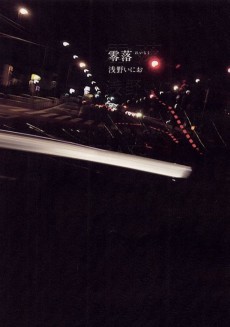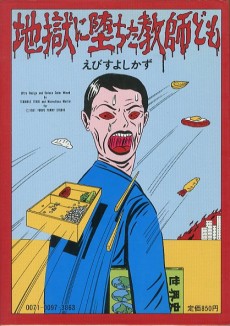OZANARI-KUN
STATUS
COMPLETE
VOLUMES
1
RELEASE
June 18, 2011
CHAPTERS
39
DESCRIPTION
Ozanari-kun is a story in the style of traditional gag manga about the titular character's adventures working in the sales promotion department of Murakami Co.
A different take on the classic office atmosphere, his boss, section chief Yabusaka has to endure Ozanaris physical and verbal abuse every day. Within his lonely heart, complicated feelings start to bloom.
CAST
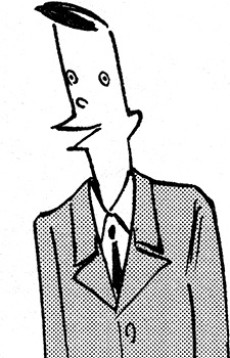
Kenichi Ozanari
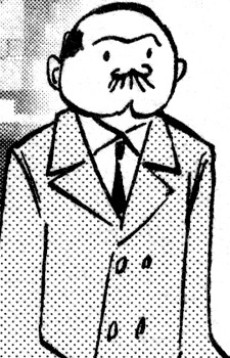
Toshiharu Yabusaka
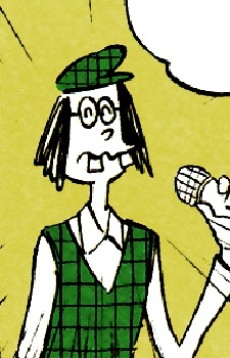
Deppa
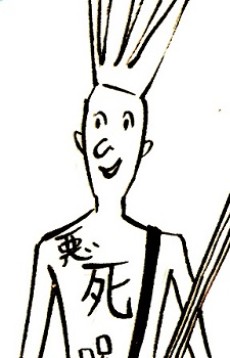
Junichi Komiyama
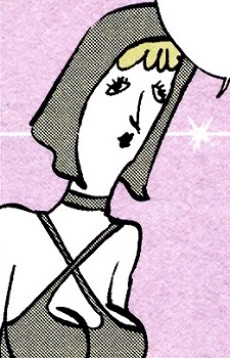
Mrs. Stardust
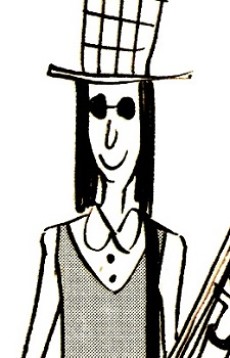
The Southern Wind Blew
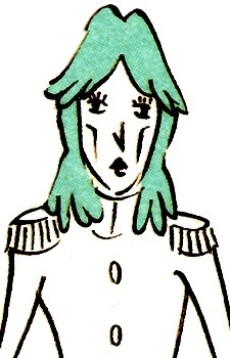
Perry Uraga
CHAPTERS
REVIEWS

NapoJ
70/100Entre colores y absurdos, está la música como conexión intergeneracional (reseña en ESP y ENG)Continue on AniListLa siguiente reseña está en Español e Inglés (traducida con el apoyo de DeepL).
La versión leída es la traducción al inglés por “Bakemono-Recchan” y editado por “M3OW”.
A la par que Asano estaba embarcado en su obra más popular, de tanto en tanto publicaba capítulos de otras series con variadas temáticas, en el caso de la particular se le puede considerar como su trabajo más experimental hasta ese momento sea en la forma, presentación o la estructura de su narrativa; Ante todo nos topamos con un “gag manga”, pocos paneles que giran alrededor de una broma, usualmente presentados en 4koma, sin embargo, en el caso de Ozanari-kun suele ocupar entre 2 a 4 páginas con un par de excepciones.
Aparte de su duración, de hecho, lo inmediatamente notable es su presentación a color. Verdes, amarillos, morados o azules, tonos poco comúnes son utilizados en cada capítulo, considero que asociarlos individualmente con alguna emoción es un ejercicio un poco “sobrepensado”, más tampoco parecen dirigidos al azar, son seleccionados de una forma armoniosa en lo que cabe de lo estrambotico, puntualizando la atmósfera general de la escena sea si sucede un hecho rídiculo o sensible. Con un par de capítulos nos habremos acostumbrado y lo apreciamos.
Lo siguiente es su diseño de personajes, cercano a sus dibujos cartoon que hemos notado en algunos instantes en otras obras. De figuras geométricas con los detalles necesarios para poder ser expresivos mediante la exageración, o reflejar diferentes rasgos de personalidad con sólo implementar un par de cambios al mismo sea en accesorios o vestuario. Y por supuesto, encajan perfectamente en su presentación a color, cada cual corresponde al otro, sin saber qué fue primero.

Rematado en la entremezcla de diferentes estilos, recortes de fotografías acompañan de vez en cuando al paisaje, un toque más plástico, cercano y misceláneo, volviendo a ratificar el ser una obra “experimental”. Probar diferentes técnicas e ideas por medio de la libertad que le permitía la narrativa, la cuál comienza únicamente de broma y cambia de a poco mientras Asano muestra más de sí mismo.
En principio son arquetipos exagerados que propician intercambios exagerados para un humor surrealista, absurdo o muy japonés, el manzai con los roles de Boke y Tsukomii, cada uno hiperconcentrado en su específico papel. Aquí se conecta o no con la broma, aunque puede apreciarse lo intrincado que son algunas, más en su mayoría requieren de conocimiento general de japonés para captar todas sus implicaciones (agradecimiento especial al grupo de traducción que leí, los cuáles realizaron de vez en cuando explicaciones detalladas de las diferentes referencias).
Más como he mencionado, desde cierto punto una de las temáticas recurrentes de Asano entra a coalición, asentado un poco a la narrativa: La música, específicamente Rock. El género de la juventud, sirviendo como una comparación entre el joven aferrado y el adulto nostálgico. Enlazando hacia las lecciones de obras previas con un enfoque menos serio, aunque igual de sincero e incluso mejor logrado (que algunas) por esa falta de restricciones.

La música siendo motivación para vivir nuestra existencia, aún si está lejos de nuestras ensoñaciones, porque permite durante cierto momento escapar de la misma y pertenecer por unos instantes a algo vagamente descriptivo como “más grande”. Son esos capítulos finales donde reconocí al Asano que conozco, su experimentación y variedad conllevo hacia la misma lección vitalista que encierra cada obra detrás de su presentación cínica, eso sí, al menos está vez la oscuridad venía acompañado de esa variada paleta de colores.
De todas maneras, mi impresión se arrastra un poco porque esa primera parte aún apreciando las capas de referencia, sigue no siendo mi humor e inevitablemente trastoca mi consideración, sin importar que tan objetivo pueda llevar la opinión, inevitablemente yo sigo siendo yo. Como también hubiese preferido que esa exploración de la música y el arte como motivación de vitalidad se abordará un poco más, aprovechando las pocas barreras de la obra.
Un interesante trabajo de Asano a través de elementos que no había utilizado hasta el momento, aderezado de las temáticas que tanto le gustan, habiendo otra novedad en sí misma, vincular a un mundo adulto nostálgico aunque dispuesto a seguir intentado contra el joven que se prepara a ese inevitable futuro, ambos compartiendo el mismo sentimiento en un similar recuerdo, la esperanza que les produjo una canción.

English
While Asano was embarking on his most popular work, from time to time he published chapters of other series with varied themes, in the case of the particular one it can be considered as his most experimental work up to that moment either in the form, presentation or the structure of its narrative; First of all we come across a “gag manga”, few panels that revolve around a joke, usually presented in 4koma, however, in the case of Ozanari-kun it usually occupies between 2 to 4 pages with a couple of exceptions.
Apart from their length, in fact, what is immediately remarkable is their color presentation. Greens, yellows, purples or blues, uncommon tones are used in each chapter, I consider that associating them individually with some emotion is a bit of an “overthought” exercise, but they do not seem to be directed at random, they are selected in a harmonious way as far as possible from the bizarre, punctuating the general atmosphere of the scene whether a ridiculous or sensitive event takes place. With a couple of chapters we will get used to it and appreciate it.
Next is his character design, close to his cartoon drawings that we have noticed in some moments in other works. Geometric figures with the necessary details to be expressive through exaggeration, or to reflect different personality traits just by implementing a couple of changes in accessories or costumes. And of course, they fit perfectly in their color presentation, each one corresponding to the other, without knowing which came first.

Topped off in the intermingling of different styles, photo clippings accompany the landscape from time to time, a more plastic, close and miscellaneous touch, again ratifying being an “experimental” work. Trying out different techniques and ideas through the freedom allowed by the narrative, which begins only as a joke and changes little by little as Asano shows more of himself.
In principle they are exaggerated archetypes conducive to exaggerated exchanges for surreal, absurd or very Japanese humor, the manzai with the roles of Boke and Tsukomii, each hyper-focused on his specific role. Here it connects or not with the joke, although you can appreciate how intricate some of them are, but for the most part they require general knowledge of Japanese to grasp all their implications (special thanks to the translation I read, which made from time to time detailed explanations of the different references).
But as I mentioned, from a certain point one of Asano's recurring themes enters the coalition, settling a bit into the narrative: Music, specifically Rock. The genre of youth, serving as a comparison between the clinging youth and the nostalgic adult. Linking back to the lessons of previous works with a less serious approach, though just as sincere and even better achieved (than some) by that lack of restraint.

Music being motivation to live our existence, even if it is far from our reverie, because it allows for a certain moment to escape from it and belong for a few moments to something vaguely descriptive as “bigger”. It is those final chapters where I recognized the Asano I know, his experimentation and variety lead to the same vitalistic lesson that each work contains behind its cynical presentation, but at least this time the darkness was accompanied by that varied palette of colors.
Anyway, my impression drags a bit because that first part, even appreciating the layers of reference, is still not my mood and it inevitably upsets my consideration, no matter how objective the opinion may be, inevitably I am still me. As I would also have preferred that exploration of music and art as a motivation for vitality to be addressed a little more, taking advantage of the few barriers of the work.
An interesting work by Asano through elements that he had not used so far, seasoned with the themes that he likes so much, having another novelty in itself, linking a nostalgic adult world but willing to keep trying against the young man who is preparing for that inevitable future, both sharing the same feeling in a similar memory, the hope that a song produced in them.

SIMILAR MANGAS YOU MAY LIKE
 MANGA DramaOyasumi Punpun
MANGA DramaOyasumi Punpun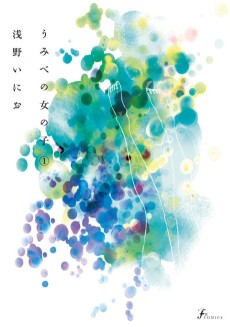 MANGA DramaUmibe no Onnanoko
MANGA DramaUmibe no Onnanoko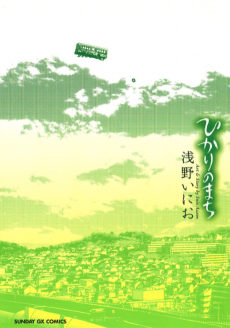 MANGA DramaHikari no Machi
MANGA DramaHikari no Machi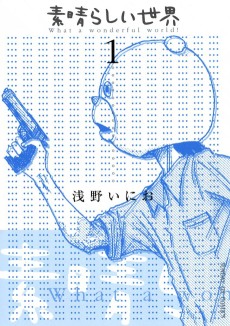 MANGA DramaSubarashii Sekai
MANGA DramaSubarashii Sekai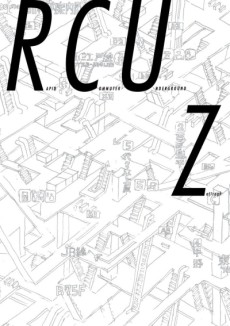 MANGA FantasyRapid Commuter Underground
MANGA FantasyRapid Commuter Underground
SCORE
- (2.95/5)
MORE INFO
Ended inJune 18, 2011
Favorited by 18 Users


